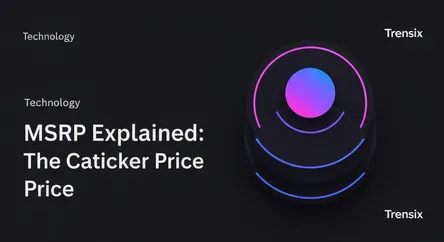Technology
MSRP Explained: The Car Sticker Price

What is MSRP? Understand the Manufacturer's Suggested Retail Price and how it impacts your negotiation power when buying a new car.
What is it?
MSRP, or Manufacturer's Suggested Retail Price, is the price an automaker recommends a dealership sell a new vehicle for. Commonly called the "sticker price," it's the figure displayed on the window's Monroney label. This price includes the vehicle's base cost, factory-installed options, and the destination charge for shipping it to the dealer. It does not include taxes, registration fees, or any dealer-installed accessories. MSRP provides a consistent pricing benchmark for consumers, creating a standardized starting point for negotiations across different dealerships.
Why is it trending?
The term MSRP is trending due to the volatile automotive market. For years, supply chain disruptions caused vehicle shortages, leading many dealers to add "market adjustments" and sell cars for thousands above the sticker price. As vehicle production stabilizes and inventory grows, the power dynamic is shifting back to the consumer. Buyers are now more frequently able to negotiate prices down, aiming for deals at or below MSRP. This return to traditional car-buying tactics has kept MSRP a hot topic.
How does it affect people?
MSRP is a critical tool for car buyers. It acts as the official starting point for price negotiations, empowering consumers to identify and question any additional dealer markups. By knowing the MSRP and the dealer's invoice price (what the dealer paid), a buyer can formulate a reasonable offer and negotiate with more confidence. It directly influences the final purchase price, affecting a person's budget and their ability to secure favorable financing. Understanding MSRP is essential for getting a fair deal on a new vehicle.